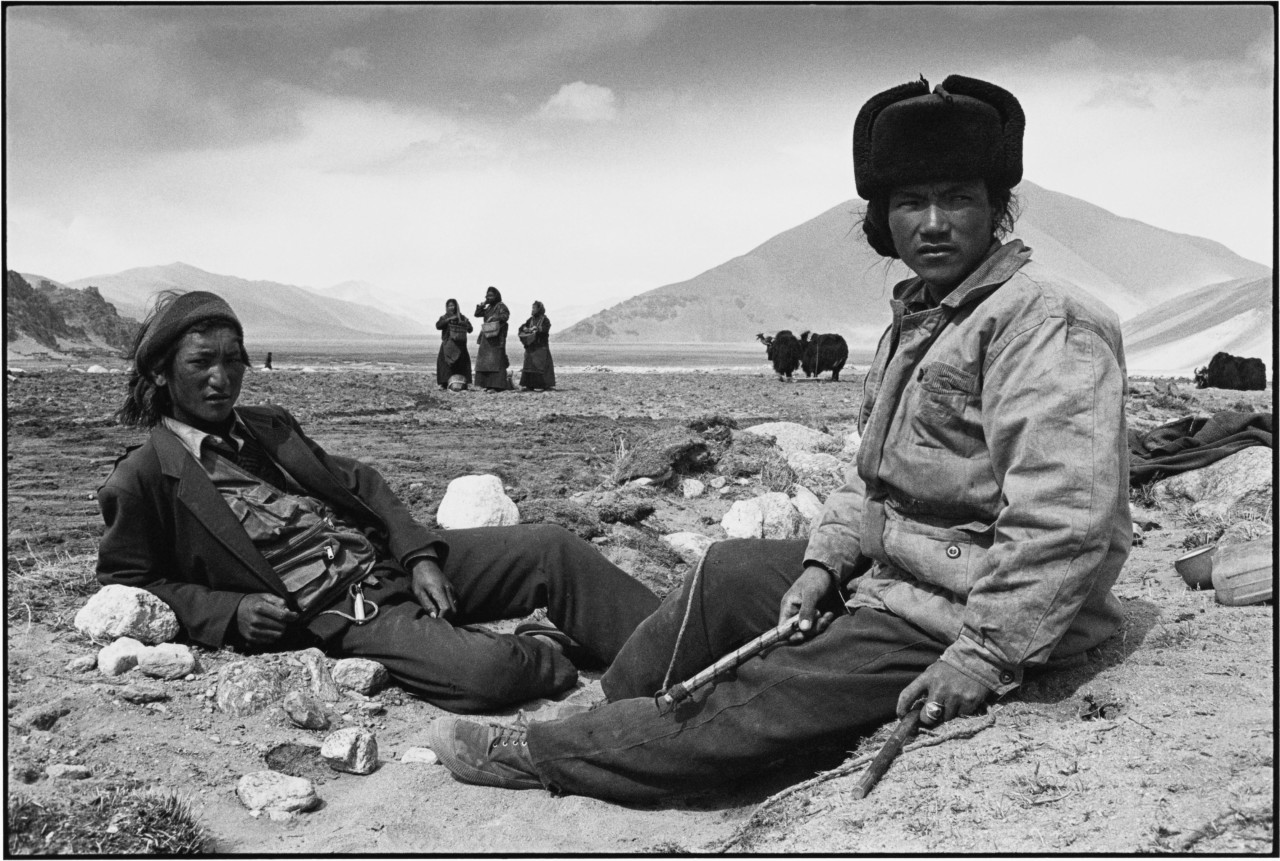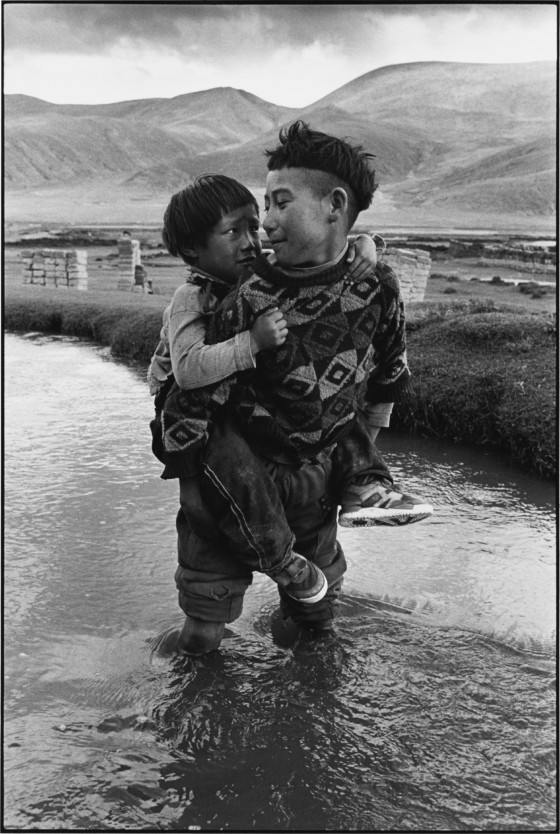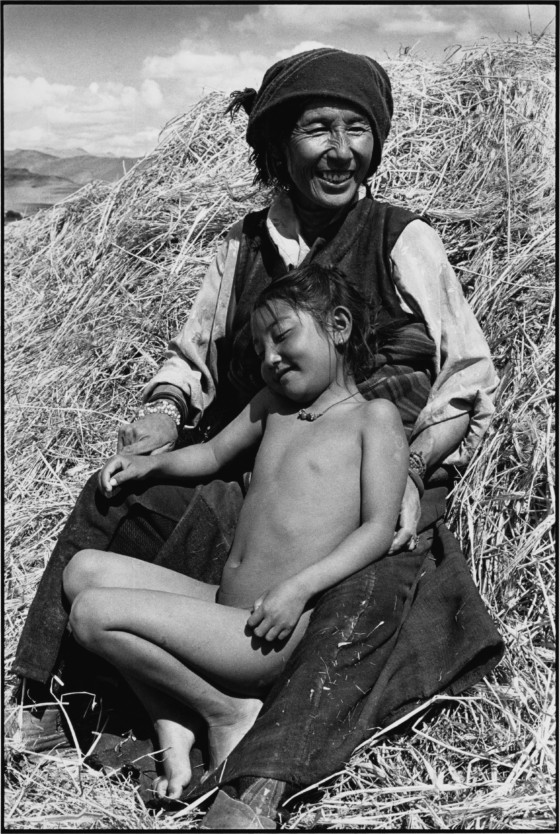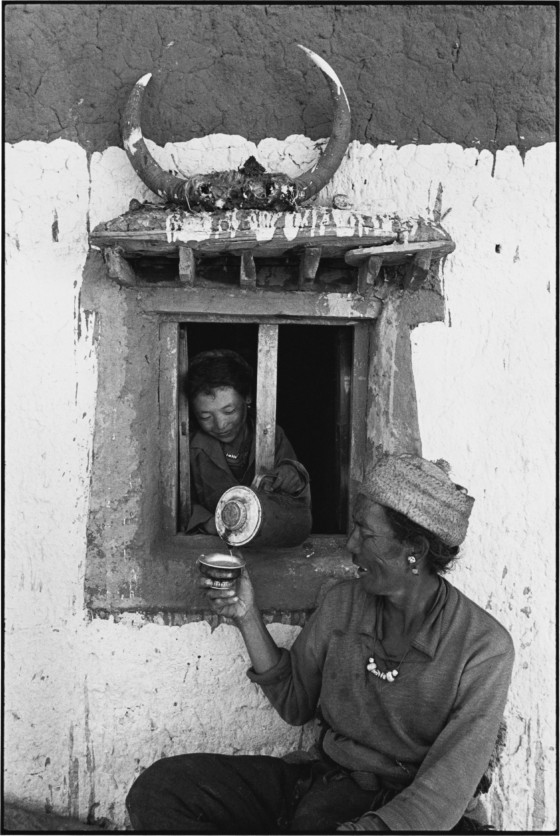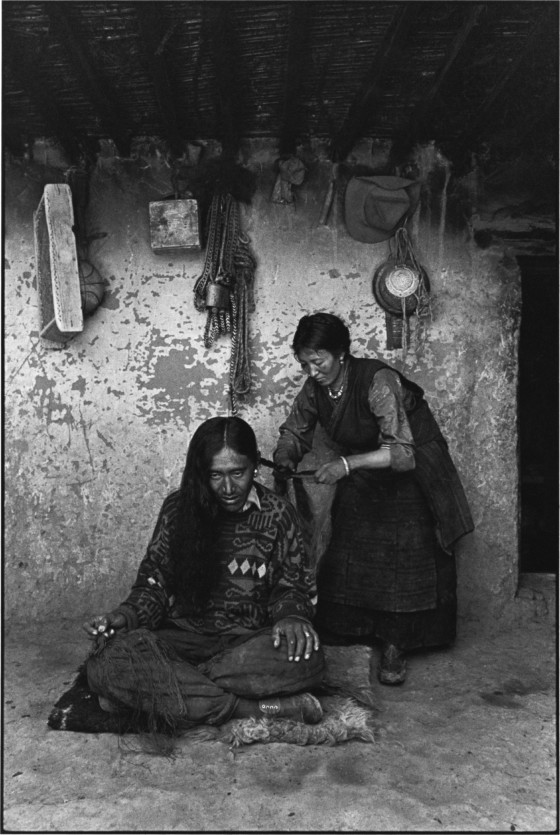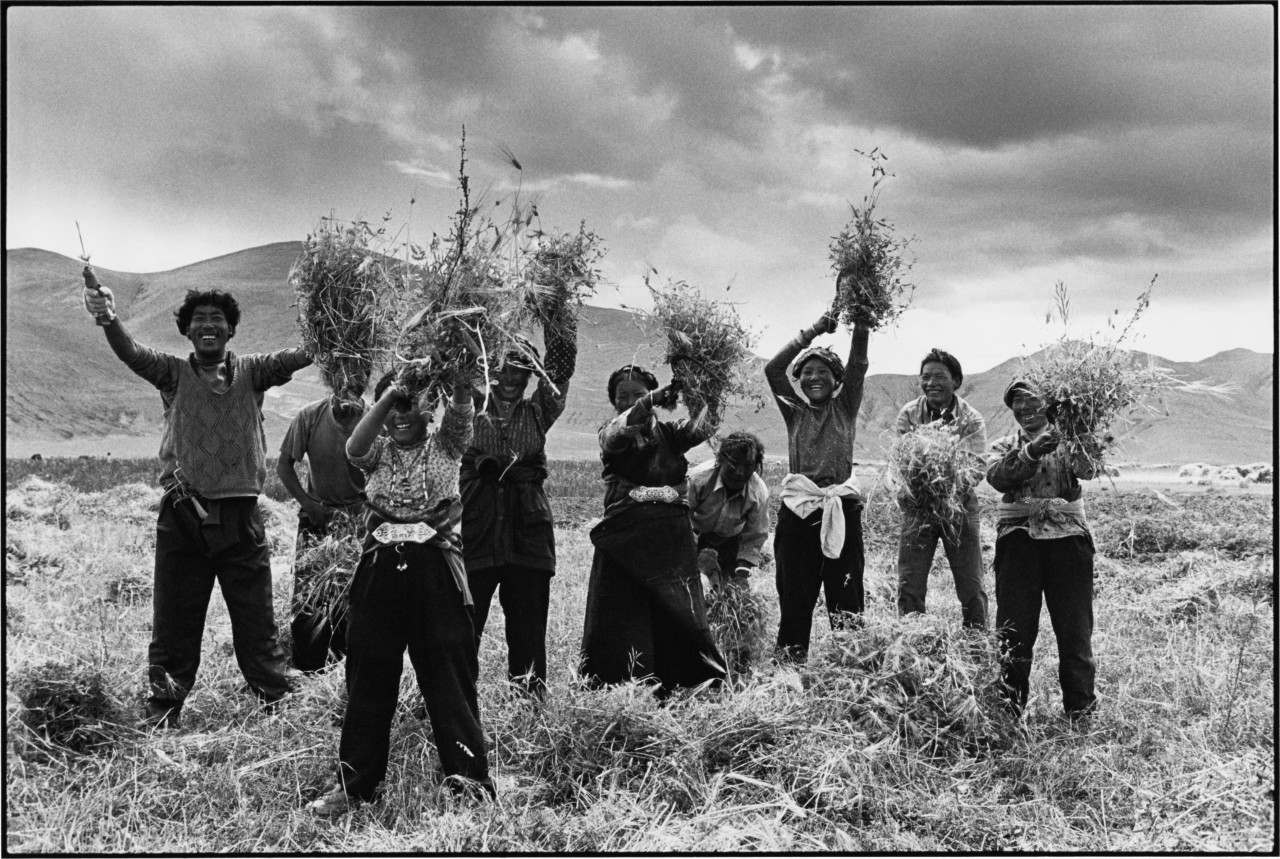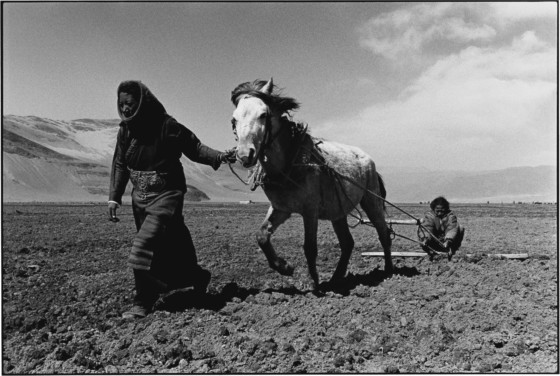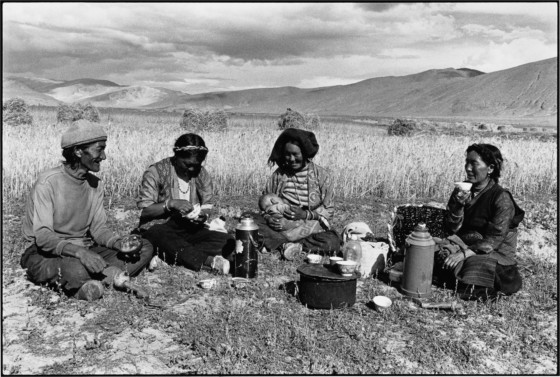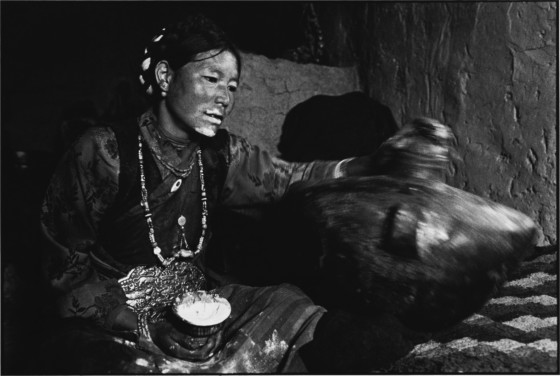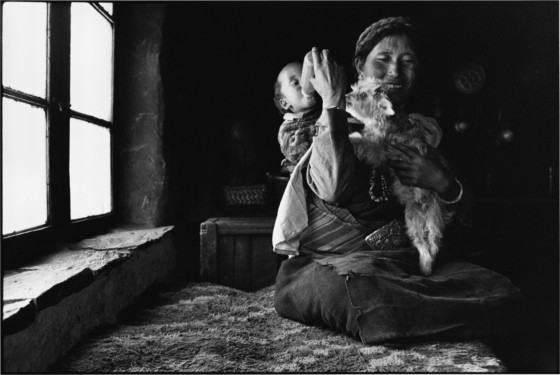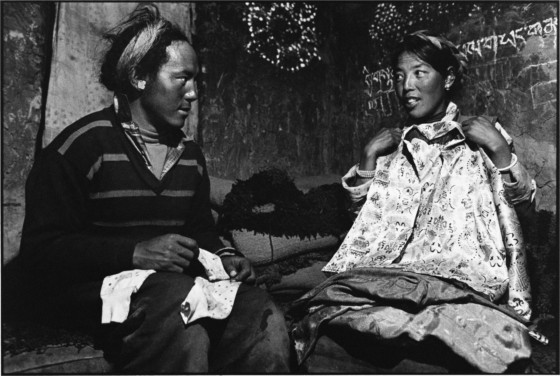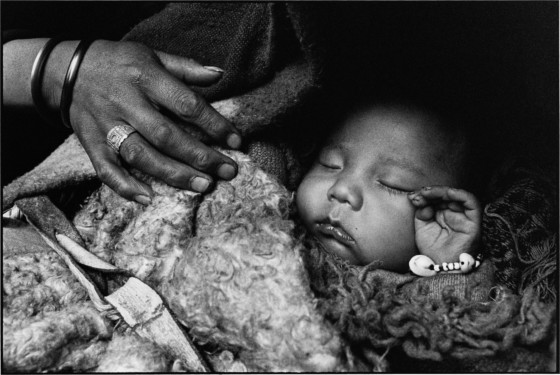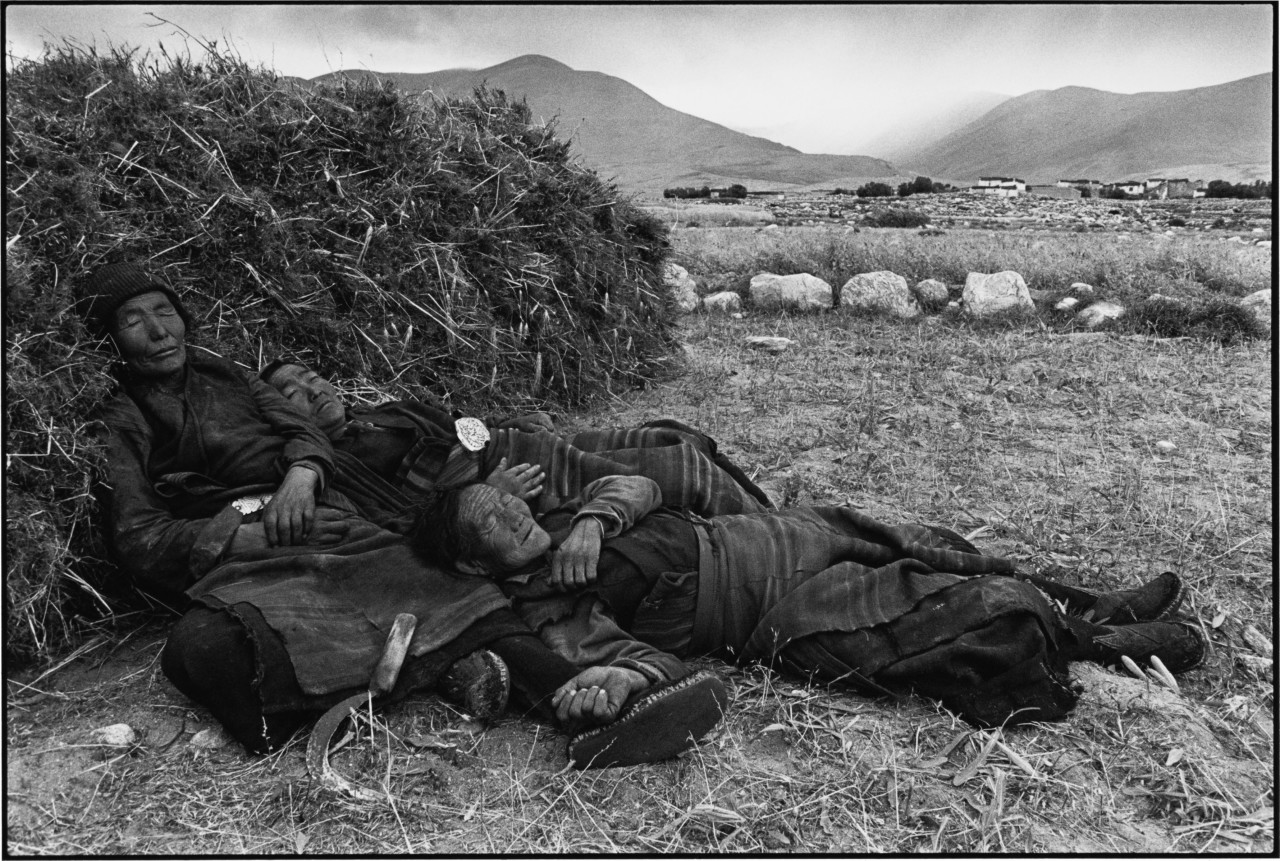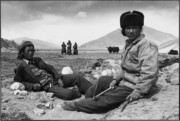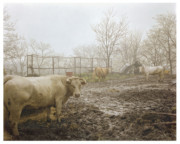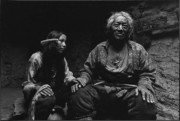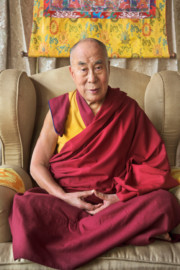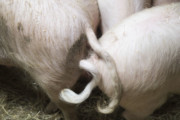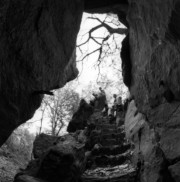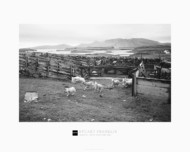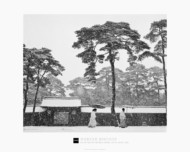As part of an ongoing series, Living With the Land, we speak to Magnum photographers whose work explores a way of life tied closely to nature.
The inhabitants of rural Tibet—as seen through the lens of Magnum photographer Lu Nan—live a relentlessly tough existence. From morning until night – when photographed near the turn of the millenium – they had endless work to do; in the spring, they sow, in the autumn, they harvest, before the summer, they shear wool which they twist into yarns. When they weren’t farming, they were sewing and weaving clothes and quilts. They are materially poor and their survival is closely bound to the whims of the weather. But, as Lu Nan explains, “Tibetan peasants do not talk about nature [as a separate entity], they are part of nature.”
In Tibet, the vast majority of peasants are Buddhists, but their religious faith is rarely fixed upon ceremony. “It is integrated into their daily life. This embodies itself in their attitude towards Nature, divinities and other living beings, as well as towards birth, aging, sickness, death and so on,” says Lu Nan. “Peasants do not use pesticides. Even if they are given out for free by the government, they still refuse to use them. The reason is very simple: pesticides will kill bugs. Life is fully respected here.”
Lu Nan spent seven years documenting these communities, resulting in the project titled, Four Seasons, which made up the third and final chapter of his Trilogy series. From 1996 to 2004, he made nine trips to Tibet and stayed three to four months each time, living alongside his subjects. His approach was methodical; he generally lodged at a government township and would visit any villages within a 2.5 hour walking distance from where he was staying. “On my last two trips, between August 2002 and May 2004, I worked in Tibet for fifteen months—six months for the first time and nine months for the second. During the work for Four Seasons, I photographed the entire spring sowing twice and the entire autumn harvest four times.”
"What we hear is the ‘yo-heave-ho’ of driving draught animals, the songs of the women in the harvest"
- Lu Nan
Eighty-five percent of Tibetans are rural workers, and live lives that are fundamentally little removed from that of their ancestors. They plow their fields with oxen and horses, reap with sickles, and winnow wheat with the wind. Lu Nan witnessed a poetry in this machineless life. “What we hear is the ‘yo-heave-ho’ of driving draught animals, the songs of the women in the harvest, loudly thanking God for bestowing a bountiful harvest and the sound of threshing,” he says.
As a nationality, Tibetans value relationships deeply, especially among family members, says Lu Nan. “When you visit one family, if only the children are in the home, you can’t ask them where their parents are. Because of the harsh environment, poverty and lack of medical care, one of their parents may well have died. The children may begin to weep [if] asked such a question,” he explains. “Therefore, when one visits a family, one should instead ask how many people there are in the family and who they are and then you know whether the children’s parents are still alive.” Friendship outside of the family unit is also fundamental to their survival. “For example, when one family builds a house, every family in the village will send one person to help,” he adds.
"In their peaceful inner state, Tibetan peasants live and work leisurely and at ease without being trapped by the past or disturbed by the future"
- Lu Nan
Four Seasons offers a powerful and intimate study of a group of people with a profound connection to the land they live upon. This in turn leads to a deep appreciation of the present, evident in Lu Nan’s portraits. Quiet pleasure—and often sheer joy—is taken in tea making, braiding hair, lifting wheat, roasting barley, sitting with family or taking rest in the sun. “In their peaceful inner state, Tibetan peasants live and work leisurely and at ease, without being trapped by the past or disturbed by the future,” explains Lu Nan. “This is the state of happiness according to Buddhism, which resonates with the blessedness sought by Epicureanism, Stoicism and Spinozism.”
The project was heavily influenced by the work of German writer and statesman Johann Wolfgang von Goethe.“Goethe’s belief in the infinite value of living in the present and his overall vision of everything determines the level of Four Seasons,” says Lu Nan. “During the seven years of photographing Four Seasons, no matter how familiar I was with the peasants’ lifestyle and their customs, I was always prepared to leave empty-handed before I went to Tibet, because the fascination of life lies in its impermanence, which is also the inspiration and solace of life for me.”


